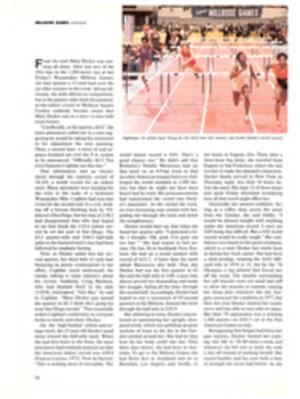
GOING THE WOOD-STOVE ROUTE HAS ITS ATTRACTIONS, BUT DRAWBACKS, TOO
Burning wood to heat homes is catching on everywhere north of the Sun Belt. The reasons commonly cited for using wood as an energy source are that trees can be replaced; that wood is cheaper than oil, gas or electricity; and that cutting wood gets you out of doors and gives you a good workout, too, especially if you use a handsaw. So it would seem to be an ideal pursuit—exercising in the woods, conserving irreplaceable fossil fuels, and saving money in the process.
But the whole truth isn't so simple. It may be true that trees can be replaced rapidly, but that is the case only when they are properly harvested and new plantings are scientifically made. The Bureau of Land Management has had to close some woodcutting areas because of excessive forest damage. Recently, in one such area near Ashland, Ore., woodcutters illegally cut down 18 salable Douglas firs; cut madrones and left them to rot; used 4-wheel-drive vehicles off the road, making deep tire marks that will cause harmful erosion; and allowed slash piles to fall into roadside ditches, where they blocked water runoff—all in a three-week period. Regeneration won't be rapid in that area, or in others like it.
Cutting wood is certainly exercise, in a sense even more so than running, for your heart must work more than twice as hard to pump blood through the arms than it does to pump it through the legs. This is why so many people die while shoveling snow, and it may also explain why orchestra conductors, who use their arms often and vigorously, seem to live forever. The sedentary woodcutter, whose arms may commonly be used for nothing more strenuous than hoisting a can of beer, will clearly run some risk of a heart attack.
Assuming he does survive, the wood he burns may indeed save fossil fuels. Unfortunately, it may also be a major cause of pollution. In areas prone to air-stagnation problems home woodburning may already account for as much as 30% of particulate pollution.
Along with all of this, woodcutting can be a false economy. The cost of buying or renting a pickup truck, of gasoline to drive it to and from woodcutting areas, of upkeep, and of the installation and maintenance of a wood stove and chimney, are considerable. For many families in moderate-sized houses, oil, gas or electricity could actually be far cheaper, even at today's prices.
As attractive as they often seem, simple 19th-century solutions don't always solve our complex 20th-century problems.

